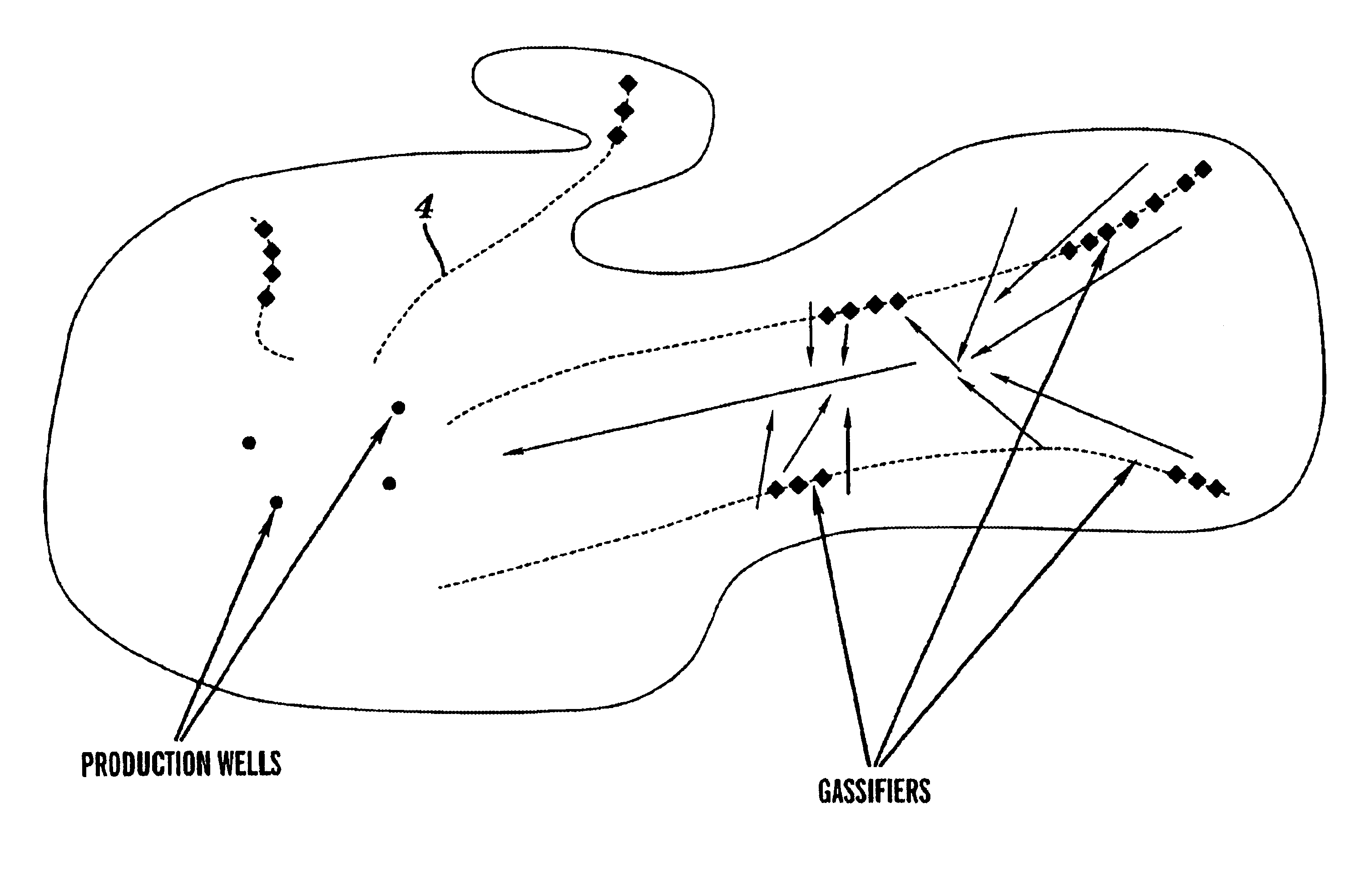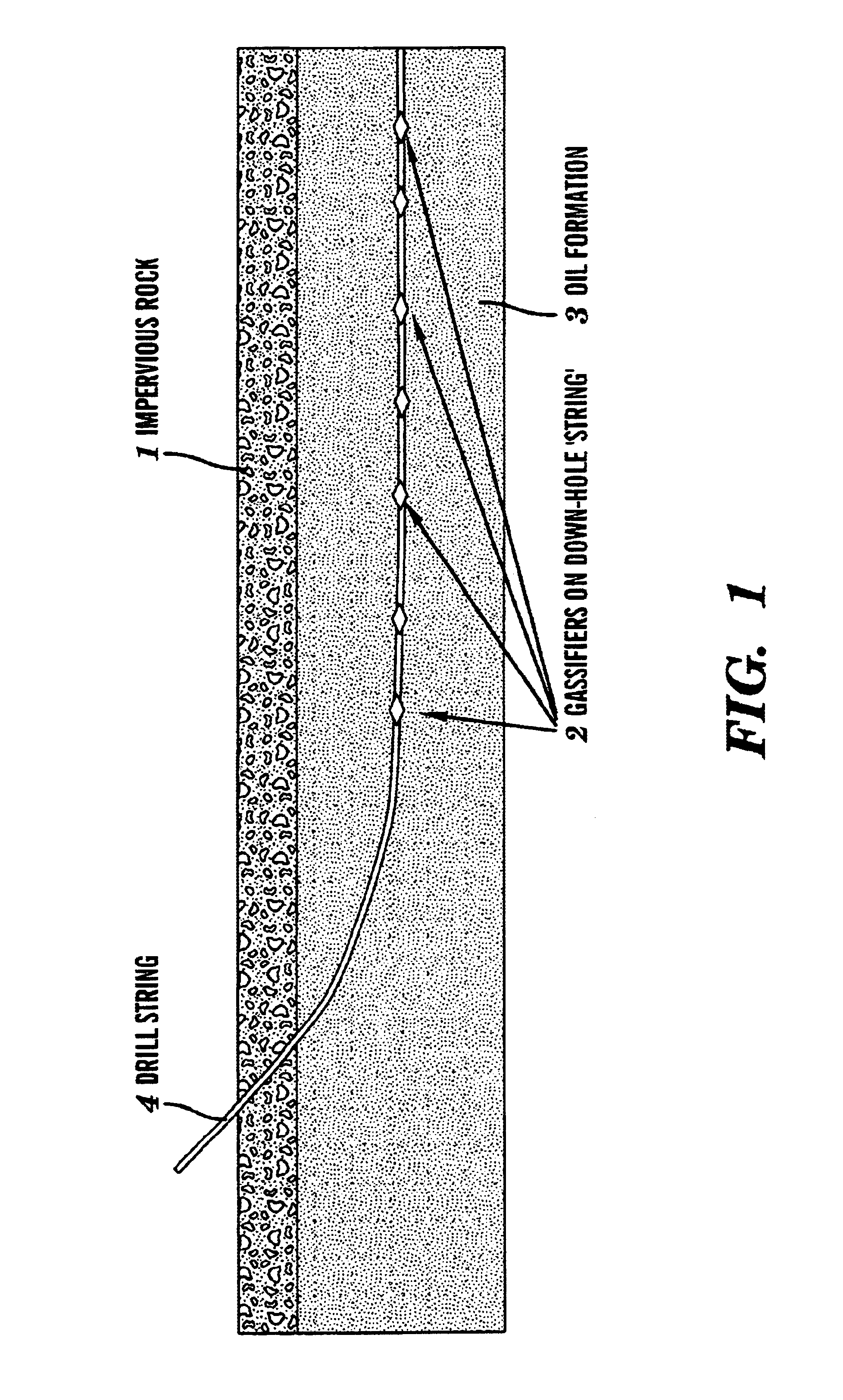Gas and oil production
a technology of gas and oil, applied in the direction of fluid removal, insulation, survey, etc., can solve the problems of only effective eor process, unsatisfactory performance of known thermal recovery process, and unsuitable for this approach
- Summary
- Abstract
- Description
- Claims
- Application Information
AI Technical Summary
Benefits of technology
Problems solved by technology
Method used
Image
Examples
Embodiment Construction
In a gasification reaction as contemplated in the performance of the invention, the following gas generation reactions will be mainly observed in a typical case.
C+H.sub.2 O.fwdarw.CO+H.sub.2
CO+H.sub.2 O.fwdarw.CO.sub.2 +H.sub.2
C.sub.p H.sub.q +H.sub.2 O.fwdarw.pCO+qH.sub.2
CO.sub.2 +C.fwdarw.2CO
CH.sub.4 +H.sub.2 O.fwdarw.CO+3H.sub.2
CH.sub.4 +CO.sub.2.fwdarw.CO.sub.2 +H.sub.2
In a gasification process to be conducted within a hydrocarbon-containing formation 1 according to the invention, as schematically illustrated in FIG. 1, devices 2 for causing a gasification event are arranged upon a string 4 adapted for down-hole work, and the string is either loaded into an existing bore hole or if necessary the string is equipped to drill its own passage through the formation. Its position is monitored and when it has penetrated a zone in a reservoir 3 containing hydrocarbon to be recovered or converted to gas, the devices are activated to initiate a gasification process.
In one proposal accordi...
PUM
 Login to View More
Login to View More Abstract
Description
Claims
Application Information
 Login to View More
Login to View More - R&D
- Intellectual Property
- Life Sciences
- Materials
- Tech Scout
- Unparalleled Data Quality
- Higher Quality Content
- 60% Fewer Hallucinations
Browse by: Latest US Patents, China's latest patents, Technical Efficacy Thesaurus, Application Domain, Technology Topic, Popular Technical Reports.
© 2025 PatSnap. All rights reserved.Legal|Privacy policy|Modern Slavery Act Transparency Statement|Sitemap|About US| Contact US: help@patsnap.com



